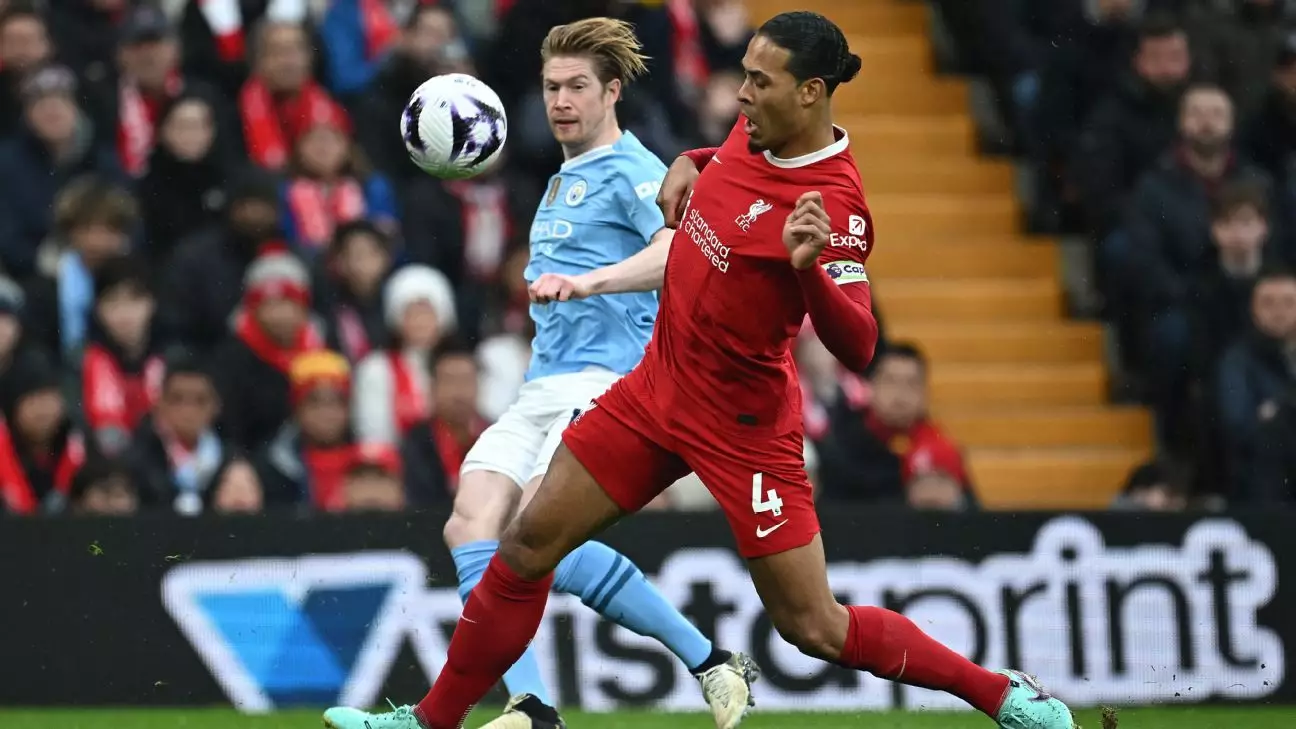As the Premier League continues to be a global spectacle, three names shine brightly in its storied history: Mohamed Salah, Virgil van Dijk, and Kevin De Bruyne. These exceptional talents symbolize the modern era of English football, amassing accolades and adoration. Yet, as they approach their contract expiration dates, the question arises: what lies ahead for these seasoned warriors in their 30s?
Salah, Van Dijk, and De Bruyne are not just players; they are integral to their teams’ successes. With the expiration of their contracts looming within the next six months, clubs are faced with critical decisions. While their current performances remain stellar, assessing their long-term value brings an air of caution. With Salah turning 33 in June and Van Dijk already at 33, their present form is crucial, but increasingly, clubs are scrutinizing the potential for future contribution.
Complicating matters, Son Heung-Min of Tottenham Hotspur, alongside other seasoned professionals like Harry Maguire and Christian Eriksen, finds himself in the same precarious situation. The trend of aging stars facing uncertain futures is pervasive, igniting debates among clubs regarding retention or the pursuit of younger talent. In the face of uncertainty, retaining players who have been key performers becomes a daunting task.
Each player presents a distinct scenario as clubs ponder their contracts. Salah, for instance, remains an offensive powerhouse, currently co-leading the Premier League’s scoring chart with 13 goals and contributing eight assists. His minimal injury record since joining Liverpool in 2017—aside from a rough patch last season—posits that he may still be the valuable asset his club desires. Nonetheless, Liverpool must evaluate whether his current dominance will translate into future reliability or if they are merely prolonging the inevitable decline.
Van Dijk, known for his defensive prowess, offers a contrasting backdrop. His injury history includes significant absences early in his Liverpool tenure, however, he has returned to remarkable fitness, missing only a handful of games in recent seasons. His experience and leadership qualities are verbally valued by managers yet depend heavily on continued flawless physical conditioning.
Meanwhile, De Bruyne’s situation appears more precarious. With a prominent injury history—most notably an alarming number of missed matches this season—it casts doubt on his viability for a grand future at Manchester City. With the prospect of a contract extension likely to be on reduced terms, his fading physical condition may compel the club to assess whether it’s worth retaining an aging star whose effectiveness may be waning.
The Calculation of Risk and Reward
A former Premier League sporting director emphasizes the balancing act clubs must undertake when contemplating contract renewals for aging players. Elements such as squad depth, potential market replacements, and the individual player’s fitness trajectory all weigh heavily into decision-making. A player’s recent injury history and overall fitness statistics can uncover hidden truths that affect their desirability for contract renewal.
When assessing these factors, it’s crucial to note the evolving landscape around aging footballers. There are examples, like Cristiano Ronaldo and Lionel Messi, who defy age norms, continuing to deliver exceptional performances well into their late 30s. However, the reality is stark; aging can also lead to steep performance declines, as exemplified by players like Wayne Rooney.
The Importance of Timing and Pragmatism
The timing of contract decisions can be critical for clubs. Liverpool, for example, wisely moved on from other aging players like Sadio Mané and Roberto Firmino, demonstrating foresight in player management. Similarly, the approach Manchester United took with Raphael Varane shows how profound and difficult the decision can be when a player’s health deteriorates.
Forging a collaborative solution between clubs and players also brings potential benefits to both. Players may negotiate for shorter contracts at reduced wages to maintain their lifestyle and family comfort. Meanwhile, clubs harbor the desire to avoid the burden of controlling high-earning players with diminished on-pitch impacts.
In an era marked by rapid evolution and fierce competition, Premier League clubs must make calculated, sometimes ruthless decisions regarding their aging stars—balancing nostalgia against the honest appraisal of on-field value. As the clock ticks down on the contracts of Salah, Van Dijk, and De Bruyne, it remains to be seen if the clubs can align their ambitions with the realities of player performance and longevity in football. Ultimately, the fate of these stellar players will be a reflection not only of their individual merits but also the overarching strategic vision of their respective clubs.

Leave a Reply